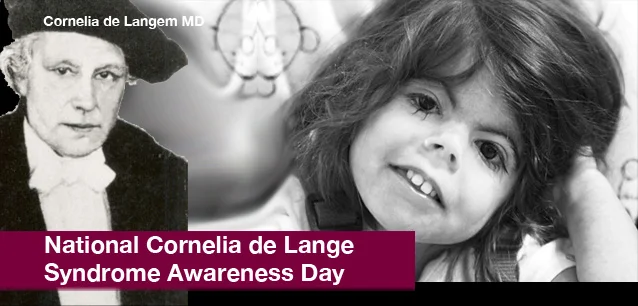 AD
AD
Today is: November 05
Scroll to explore events active on this date.
Additional Events on LEEP
LEEP INK FEATURES

August? Absolutely!
In August, we live through the Dog Days of Summer. It's hot and often humid, and those who can leave for better climates do. Down south, winter is in full force. August is also known as "the ...

In The Heat of July: July 2025 Events
Is it hot enough (or cold enough if you're below the equator) for you yet? There is actually a day for that! Like every month, I pick a diverse collection of events you may or may not know about. This ...

May Blooms: Events in May 2025
Along with October, May is one of the most densely packed months of the year. It's before the summer humidity and the last whole month of the school year. The weather is warming in t...
About National Cornelia de Lange Syndrome Awareness Day
United States
Ends: May 11, 2024
DESCRIPTION:
Cornelia de Lange Syndrome Awareness Day is observed each year on the second Saturday of May to shed light on this often misdiagnosed, little-known genetic syndrome.
First observed in 1989, CdLS is an opportunity to educate all about the syndrome.
CdLS is a genetic syndrome present from birth. There is no cure, and it occurs in approximately one in 10,000 live births and affects males and females equally, regardless of race.
The severity of CdLS ranges from mild to severe, but all individuals with CdLS share similar characteristics: small stature, hands, feet, and head; joined eyebrows; long eyelashes; upturned nose; and thin, downturned lips.
Physical and cognitive development is delayed. Self-injurious behavior is typical, and 60-70% display some degree of autism spectrum disorder. Speech and language are delayed or absent. Limb differences and missing limbs occur in 25% of cases. Common medical problems include gastroesophageal reflux disease, bowel abnormalities, heart defects, seizures, and cleft palate.
Changes in three different genes mark CdLS. These genes are NIPBL on chromosome five, SMC1A on the X chromosome, and SMC3 on chromosome ten. Changes in the latter two genes correlate with a milder form of the syndrome.
In 99% of cases, the gene change that causes CdLS is sporadic, not inherited, which means the change occurs randomly during conception.
Researchers estimate 20,000 individuals in the U.S. have CdLS but live without diagnosis and support services.
Content adapted from the Cornelia de Lange Syndrome website.
VIDEOS
ADDITIONAL IMAGES
Currently, this event does not have supporting images.
Where would you like to go now?
 AD
AD



/footer-logo.svg)
